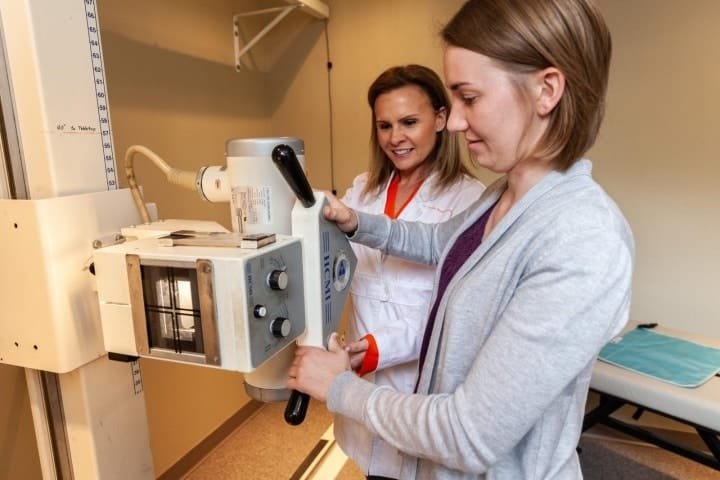A career as a radiology tech is an excellent choice for those who are interested in the medical field and enjoy working with advanced technology. As healthcare continues to rely heavily on diagnostic imaging, the demand for skilled radiology technologists grows steadily. In this comprehensive guide, we provide a detailed pathway for how to become a radiology tech, covering everything from education and certification to specializations and career advancement.
What Does a Radiology Tech Do?
A radiology tech, also known as a radiologic technologist or radiographer, is a medical professional who performs diagnostic imaging procedures. These procedures include X-rays, computed tomography (CT) scans, magnetic resonance imaging (MRI), and more. Radiology techs are responsible for:
- Preparing patients for imaging procedures
- Operating imaging equipment to capture high-quality diagnostic images
- Ensuring patient safety and minimizing radiation exposure
- Working closely with radiologists to interpret images
- Maintaining imaging equipment and patient records
If you are wondering how to become a radiology tech, this guide provides the exact steps to help you achieve that goal.

Step 1: Earn a HighSchool Diploma or GED
The first requirement for those pursuing how to become a radiology tech is obtaining a high school diploma or GED. High school courses that are beneficial for this career path include:
- Biology
- Physics
- Chemistry
- Mathematics
These subjects lay the groundwork for understanding anatomy, physiology, and imaging principles.
Step 2: Choose an Accredited Radiologic Technology Program
Once you have your diploma, the next step in how to become a radiology tech is enrolling in an accredited radiologic technology program. These programs can lead to an associate’s degree (the most common pathway) or a bachelor’s degree in radiologic sciences. Accreditation bodies like the Joint Review Committee on Education in Radiologic Technology (JRCERT) ensure the quality of these programs.
Types of Radiologic Technology Programs
- Associate Degree in Radiologic Technology: Typically takes 2 years and includes classroom instruction and clinical rotations.
- Bachelor’s Degree in Radiologic Sciences: A 4-year program offering advanced coursework and specialization options.
Step 3: Complete Clinical Training
Clinical training is a vital component in how to become a radiology tech. During clinical rotations, you will:
- Gain hands-on experience in hospitals or imaging centers
- Learn how to operate imaging equipment
- Develop patient care skills
Work under the supervision of experienced radiologic technologists
Clinical training ensures you are prepared for real-world scenarios and helps you meet certification requirements.
Step 4: Obtain Certification from the ARRT
After completing your educational and clinical requirements, the next step in how to become a radiology tech is obtaining certification. The American Registry of Radiologic Technologists (ARRT) certification is the gold standard in this field. To become certified, you must:
- Graduate from an accredited program
- Pass the ARRT exam, which tests your knowledge of imaging procedures, patient care, and radiation safety
Many employers prefer or require ARRT certification for radiology techs.
Step 5: Get State Licensure (If Required)
Most states require radiology techs to be licensed in addition to holding ARRT certification. Licensing requirements vary, so check with your state’s health board for details. In many cases, ARRT certification fulfills state licensure requirements.
Step 6: Maintain Certification and Continue Your Education
Maintaining your certification is an essential part of how to become a radiology tech and stay competitive in the field. To maintain ARRT certification, you must:
- Complete 24 continuing education (CE) credits every 2 years
- Stay updated with new imaging technologies and safety protocols
Key Skills Required for a Successful Radiology Tech Career
To excel as a radiology tech, you need the following skills:
- Technical Proficiency: Mastery of imaging equipment like X-rays, CT scanners, and MRI machines.
- Attention to Detail: Ensuring accurate patient positioning and clear imaging.
- Communication Skills: Effectively explaining procedures to patients and collaborating with healthcare teams.
- Patient Care: Demonstrating empathy and providing comfort during procedures.
- Problem-Solving: Adapting to challenges and troubleshooting equipment issues.
Specializations in Radiologic Technology
For those interested in advancing their careers, there are several specializations within radiologic technology. These include:
- Computed Tomography (CT) Technologist
CT technologists perform detailed cross-sectional imaging and require additional training and certification.
- Magnetic Resonance Imaging (MRI) Technologist
MRI technologists specialize in capturing detailed images of organs and tissues using magnetic fields.
- Mammography Technologist
Specializing in breast imaging to detect cancer and other conditions.
- Cardiovascular-Interventional Technologist
Focused on imaging procedures involving the heart and vascular system.
Career Outlook and Job Opportunities
Job Growth
According to the U.S. Bureau of Labor Statistics (BLS), employment for radiology techs is expected to grow by 6% from 2022 to 2032. This growth is driven by increased demand for diagnostic imaging in an aging population.
Salary Expectations
The median annual salary for radiology techs is around $65,000, with higher earning potential for those in specialized fields or with advanced certifications.
Employment Settings
Radiology techs can work in various healthcare settings, such as:
- Hospitals (general and specialized)
- Outpatient clinics
- Diagnostic imaging centers
- Physicians’ offices
Steps to Advance Your Career
- Pursue Advanced Certifications: Specialize in areas like MRI, CT, or mammography.
- Earn a Bachelor’s Degree: Open doors to leadership and management roles.
- Consider a Master’s Degree: Ideal for roles in healthcare administration or radiologic education.
Conclusion
Understanding how to become a radiology tech sets the stage for a fulfilling career in healthcare. From obtaining the right education and certification to mastering essential skills, the path to becoming a radiologic technologist offers numerous opportunities for growth and specialization. As the demand for diagnostic imaging continues to rise, radiology techs will remain crucial in delivering quality healthcare services.






